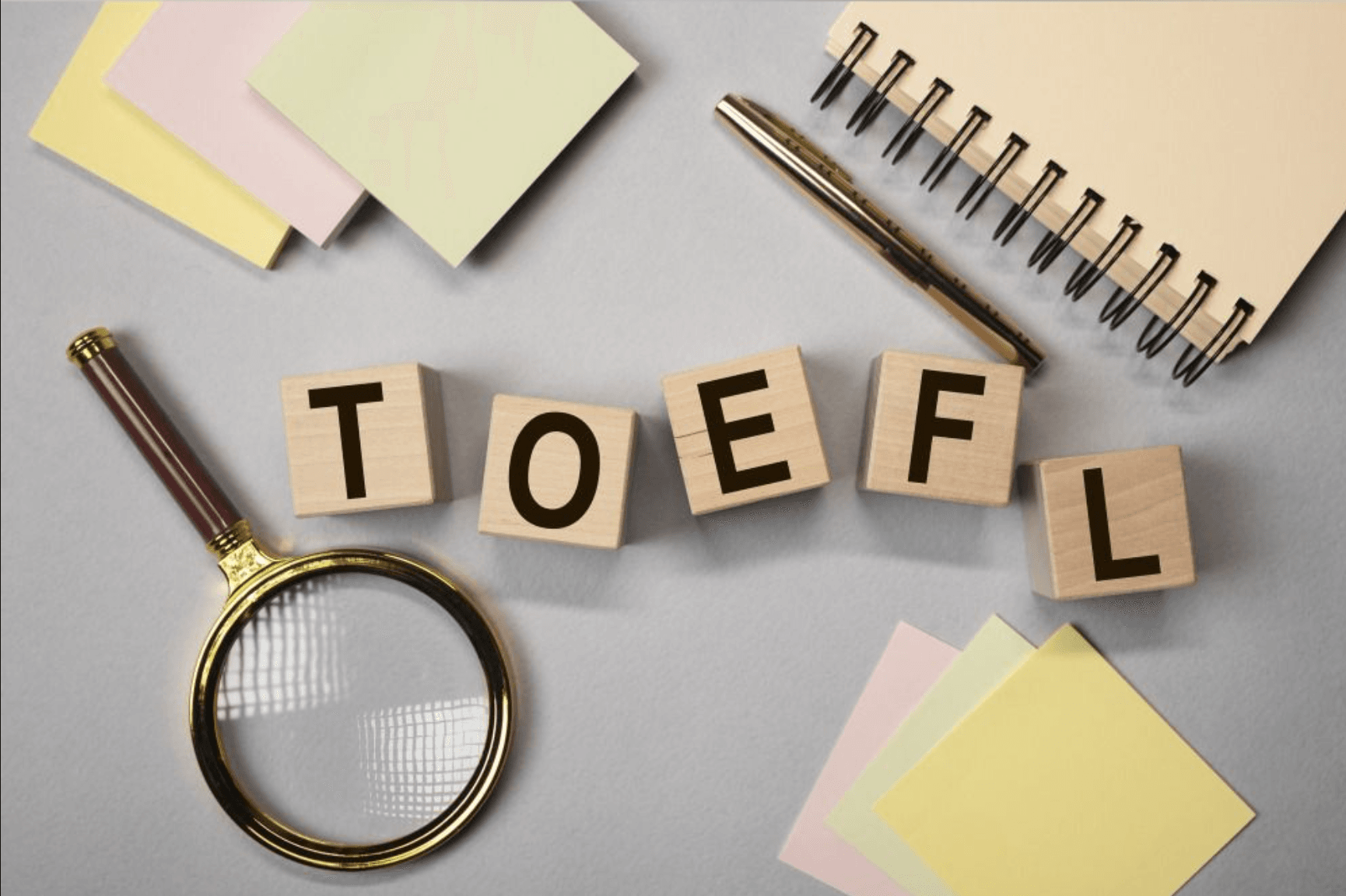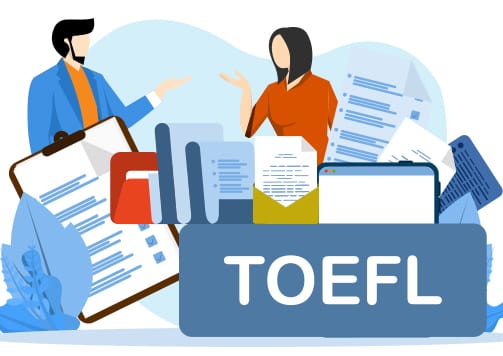For countless aspiring students and professionals, the dream of studying at an international university or advancing a career in an English-speaking environment is a powerful motivator. Yet, standing between this dream and its realization is often a single, formidable hurdle: the Test of English as a Foreign Language, or TOEFL. This exam is more than a simple English test; it’s a comprehensive assessment of your ability to use English in a demanding academic setting. But what if there was a tool that could demystify the exam, transform uncertainty into confidence, and turn anxiety into a focused strategy for success? There is, and it’s the TOEFL mock exam.
A common misconception is to view a mock test as mere practice. In reality, it is the single most powerful weapon in a test-taker’s preparation arsenal. It is the crucible where theoretical knowledge is forged into practical skill. A well-designed TOEFL mock is not just a rehearsal; it is a comprehensive diagnostic, a strategic planner, and a mental conditioner all in one. This guide is designed to be your definitive resource for understanding, utilizing, and ultimately mastering the TOEFL mock to achieve your target score. While this article provides the critical strategy for test practice, remember that true skill improvement comes from building a solid foundation in the English language itself. At Bolsa25, we believe in building confident English speakers who are not just exam-ready, but world-ready, through interactive, conversation-based learning.

Importance of TOEFL mock tests in exam preparation
In the landscape of TOEFL preparation, materials abound: textbooks, vocabulary apps, and strategy guides. While all these resources have their place, they primarily address the theoretical dimension of the test. The TOEFL mock test, however, operates in a different, more critical domain: the domain of application. To treat it as an optional extra is to fundamentally misunderstand the nature of the TOEFL challenge. It moves you from passive knowledge to active skill. Imagine reading a dozen books on how to swim. You could learn about different strokes and breathing techniques, but would you be ready to jump into a pool? The same principle applies to the TOEFL. A TOEFL mock is the act of getting in the pool, forcing you to apply everything you’ve learned in a simulated, real-time environment.
Furthermore, it serves as a crucial diagnostic tool. Your first full-length mock test provides an objective, data-driven baseline of your abilities, revealing specific areas of weakness. This allows you to create a highly personalized and efficient study plan. Finally, the TOEFL is a mental marathon lasting nearly three hours. Regularly taking full-length TOEFL mocks builds the essential mental endurance to handle the cognitive load and maintain performance from the first question to the very last.
How do mock exams simulate real test conditions?
The value of a mock test is directly proportional to its authenticity. A high-quality TOEFL mock test online is meticulously engineered to be a high-fidelity replica of the actual iBT experience. This simulation is a multi-layered effort to recreate the cognitive, environmental, and psychological pressures of test day.
- Content and Question Types: The reading passages, listening lectures, and integrated tasks mirror the length, complexity, and academic tone of the official exam. The questions reflect the specific formats found in each section, ensuring you are practicing with relevant material.
- Interface and Environment: The mock test recreates the entire on-screen environment, including the split-screen layout, the persistent on-screen timer, and the specific navigation tools. This familiarity prevents you from wasting cognitive energy on test day figuring out the software.
- Timing and Pacing: A quality mock enforces the strict, section-by-section time constraints of the real TOEFL. It forces you to make real-time decisions about pacing and time allocation, a skill that can only be learned through practice under authentic pressure.
- Cognitive Load: By taking the test in one sitting, you experience the cumulative mental fatigue of the nearly three-hour exam. This prepares you for the unique challenge of tackling the demanding Writing section after nearly two hours of intense reading and listening.
What a TOEFL mock test includes?
A full-length TOEFL mock test is a mirror of the official iBT exam, structured into four distinct sections. Understanding the architecture of each is the first step toward targeted improvement.
Reading: This section tests your ability to comprehend university-level academic texts. A toefl reading mock test typically includes 2 passages with 10 questions each, to be completed in 35 minutes. The challenge lies in the density of the material and the strict time limit. The guided analysis of academic articles in Bolsa25’s courses helps students deconstruct dense texts efficiently.
Listening: Here, the challenge shifts to spoken language. A toefl listening mock test features academic lectures and campus conversations. You hear each recording only once and must take effective notes to answer the questions that follow. The live, interactive classes at Bolsa25 train your ear to catch the nuances and flow of natural spoken English, which is perfect preparation for this section.
Speaking: Often considered the most intimidating section, it tests your ability to communicate ideas clearly under extreme time pressure. A toefl speaking mock test includes one independent task and three integrated tasks. With only 15-30 seconds to prepare, thinking on your feet is crucial. Bolsa25’s small-group classes provide a safe environment to practice articulating ideas and receive instant, personalized feedback.
Writing: The final section requires you to produce well-structured academic essays. A toefl writing mock test has two tasks: an Integrated Writing Task and a Writing for an Academic Discussion task. The challenge is to synthesize information and construct a well-reasoned argument within the time limit. The personalized critiques on student writing in Bolsa25’s programs are essential for refining your essays from good to great.
Difference between official and unofficial mock tests
When choosing practice materials, you’;ll encounter two main types: official and unofficial mock tests. A balanced approach, leveraging the strengths of both, is the best strategy.
Official Mock Tests, produced by ETS (the creators of the TOEFL), are the gold standard. They use retired, real TOEFL questions, and their scoring is highly predictive of your actual performance. However, they are costly and limited in number, making them precious resources to be used strategically for benchmarking.
Unofficial Mock Tests are created by third-party test prep companies. Their main advantages are availability and affordability; many are free or included in course subscriptions. These TOEFL mocks are perfect for regular, full-length practice to build stamina and refine time management. The quality can vary, so choosing a reputable provider is key. Their scoring is an estimation and should be used to track progress rather than as a precise prediction.
Benefits of Taking TOEFL Mock Exams
Engaging with a TOEFL mock exam yields concrete, measurable improvements in your readiness. The benefits extend beyond a simple score, touching upon critical aspects of performance: pacing, self-awareness, and psychological fortitude.
Time management improvement
The TOEFL’s relentless clock is a primary source of stress. A mock test is the only environment where you can safely and repeatedly practice managing this pressure. With each test, you begin to develop an “internal clock,” learning the rhythm of each section. This allows you to create micro-pacing goals, such as aiming to complete a reading passage in 17 minutes or using the 15-second speaking prep time to jot down two key points. This skill, honed through repeated practice, transforms time from an adversary into a managed resource.
Identifying strengths and weaknesses
A mock test score is just the tip of the iceberg. The real value lies in the detailed analysis of your performance. The key is to create a “mistake log” after every test. For every error, document the question type, the root cause of the error (e.g., vocabulary gap, misread question, time pressure), the correct logic, and a corrective action. This analytical process turns every mistake into a valuable lesson and helps you see patterns you would otherwise miss. This is where personalized feedback, like that offered in Bolsa25’s courses, becomes a powerful accelerator, helping you turn persistent weaknesses into reliable strengths.
Reducing exam-day anxiety
The fear of the unknown is a major contributor to test-day anxiety. A mock exam is the most effective antidote, working through the psychological principle of “exposure therapy.” By repeatedly exposing yourself to a simulated version of the stressful event, you gradually desensitize yourself to it. The interface becomes familiar, the timing becomes predictable, and the structure becomes second nature. This familiarity breeds calm and builds a reservoir of confidence, allowing you to walk into the testing center feeling that the real test is “just another mock test.”
How to Use TOEFL Mock Tests Effectively?
Taking a mock test is easy; extracting its maximum value requires a disciplined, systematic approach. To truly transform practice into performance, you must adopt a three-part cycle: simulate realistically, review meticulously, and track progress visually.
Setting realistic conditions
The foundation of effective mock testing is authenticity. Before you begin, block out a 3-hour window where you will be completely undisturbed. Adhere strictly to the single 10-minute break. Work in a sterile environment with your phone off and no other applications open. Use only a notepad and a pen for notes. Most importantly, be strict with yourself: do not pause the timer, look up words, or give yourself extra time. The purpose is not to get a perfect score; it’s to get an accurate score.
Reviewing mistakes and learning from them
This is the most critical step. The learning happens not while taking the test, but when reviewing it. Allocate at least as much time to reviewing the test as you did to taking it. Analyze every single question, not just the ones you got wrong. For speaking and writing, this is harder to do alone. Try to score your own responses against the official TOEFL rubrics. This is where expert human feedback is irreplaceable. Submitting your responses from a TOEFL mock to a Bolsa25 instructor provides precise, actionable feedback that is essential for significant improvement.
Tracking progress over time
A single data point is an anecdote; multiple data points form a trend. To maintain motivation and ensure your study plan is working, you must track your performance across multiple tests. Create a simple spreadsheet to log your overall score and individual section scores for each test. This allows you to visualize your progress, identify which skills are improving and which are stagnating, and adjust your study plan accordingly. Seeing your scores trend upwards is a powerful motivator that reinforces the value of your hard work.
Common Mistakes in TOEFL Mock Practice
While the TOEFL mock is a powerful tool, its effectiveness can be severely undermined by common bad habits. To ensure your practice time translates into real score gains, it’s crucial to be aware of and actively avoid these pitfalls.
- Binge-Testing Without Review: Taking test after test without analyzing your mistakes is the most common error. Quality over quantity is the golden rule. One test reviewed meticulously is far more valuable than three tests taken with no review.
- Ignoring Weak Sections: It’s human nature to practice what we’re good at. You must have the discipline to confront your weakest areas head-on, as that is where the most significant point gains are to be found.
- Not Simulating Conditions: Pausing the timer or looking up a word creates a false sense of security. You must embrace the discomfort of a true simulation to get an accurate measure of your readiness.
- Focusing Only on the Final Score: The score is a result; the detailed performance data is the diagnosis. Focus on analyzing the “why” behind your score to guide your future efforts.
- Leading to Burnout: Create a balanced study schedule that includes mock tests but also allows for focused skill-building, review, and, crucially, rest. A burned-out mind cannot perform well.

Test-Day Simulation Strategies
As you approach your actual test date, your final mock test should be a full-scale dress rehearsal. The goal is to simulate the entire experience of test day to minimize surprises and calm your nerves.
Schedule your final mock test for the exact same day of the week and time as your real exam. Replicate your entire planned morning routine: wake-up time, the exact breakfast you plan to eat, and any pre-test warm-up activities. Practice the 10-minute break strategically, having your planned snack and water ready. Step away from the computer to physically and mentally reset. After the simulation, do a “post-flight debrief.” Pay attention to how you feel physically and mentally. This helps you anticipate the reality of the post-test experience and can inform your final week of preparation. By executing this dress rehearsal, the real test day will feel like an event you have already lived through.
In Conclusion
The journey to TOEFL success demands more than just linguistic knowledge; it requires strategy, stamina, and self-awareness. The TOEFL mock exam is the cornerstone of this preparation, acting as a diagnostic tool, a high-fidelity simulator, and a powerful confidence booster. Effective TOEFL preparation is a continuous cycle of testing, analyzing, and learning. Each mock test provides a rich dataset that, when analyzed, reveals the path to a higher score.
You now possess the strategic blueprint to master the mock exam. The next step is to build the core English skills—the fluency, vocabulary, and grammatical precision—that will make your target score a reality. A strategy helps you maximize the points you have, but building fundamental skills is what earns you more points to begin with. At Bolsa25, our interactive, conversation-based courses and personalized feedback are designed to do just that. We focus on building genuine, confident communication skills that serve you not only on the TOEFL but in your future academic and professional life.
FAQs
The definition of a good TOEFL score is entirely relative to your goals. A score of 72 is generally in the low-intermediate range. While it might be sufficient for some community colleges or conditional admission programs, most undergraduate and graduate programs at universities in English-speaking countries require scores of 80 or higher, with competitive programs often looking for 90, 100, or more. Always check the specific admission requirements for each university you are interested in.
The TOEFL is widely regarded as a challenging exam due to its academic content, integrated-skill tasks, and strict time pressure. However, it is more productive to view it as challenging but conquerable. The TOEFL tests a specific set of skills that can be systematically learned and improved. With the right strategy, a consistent study plan, and dedicated practice using tools like the TOEFL mock test, any student can master the format. Foundational skill-building, such as the conversation-based learning offered at Bolsa25, is key to building the underlying confidence that makes the test feel less difficult.
This is a common point of confusion. The current, most widely used version of the test is the TOEFL iBT (Internet-Based Test), which is scored on a scale of 0 to 120. Each of the four sections is scored from 0 to 30. Therefore, a score of 700 is not possible on the modern TOEFL iBT. This score range likely refers to the old TOEFL PBT (Paper-Based Test), which was scored from 310 to 677, or another standardized test entirely. For the TOEFL iBT, a competitive score for top universities is typically 100 or above.
A score of 79 is a significant benchmark, as it is often the minimum requirement for many undergraduate programs. Achieving a 79 signifies a solid intermediate level of English proficiency. For a student starting at a lower level, it requires dedicated effort but is an achievable goal. It demands a balanced foundation in all four skill areas, as you cannot have one very weak section and hope to reach 79. The key is a balanced approach: building core vocabulary and grammar while simultaneously using TOEFL mocks to perfect your test-taking strategy and time management. A focused plan built around analyzing your performance on a mock test is the most direct path to crossing the 79-point barrier.Is 72 a good TOEFL score?
Is TOEFL a difficult exam?
Is 700 a good TOEFL score?
Is it hard to get 79 in TOEFL?

